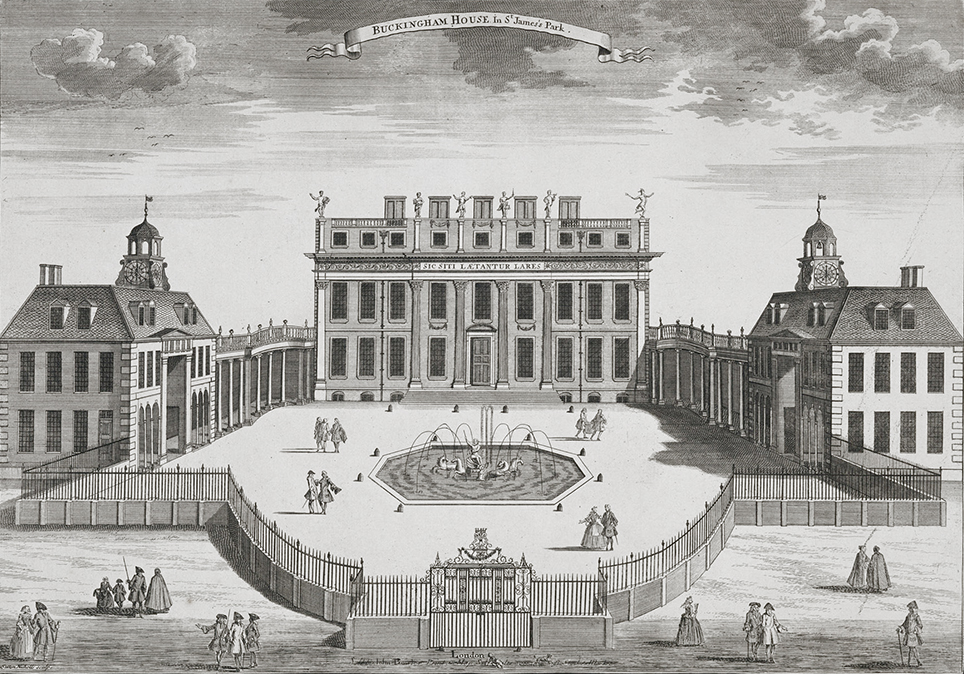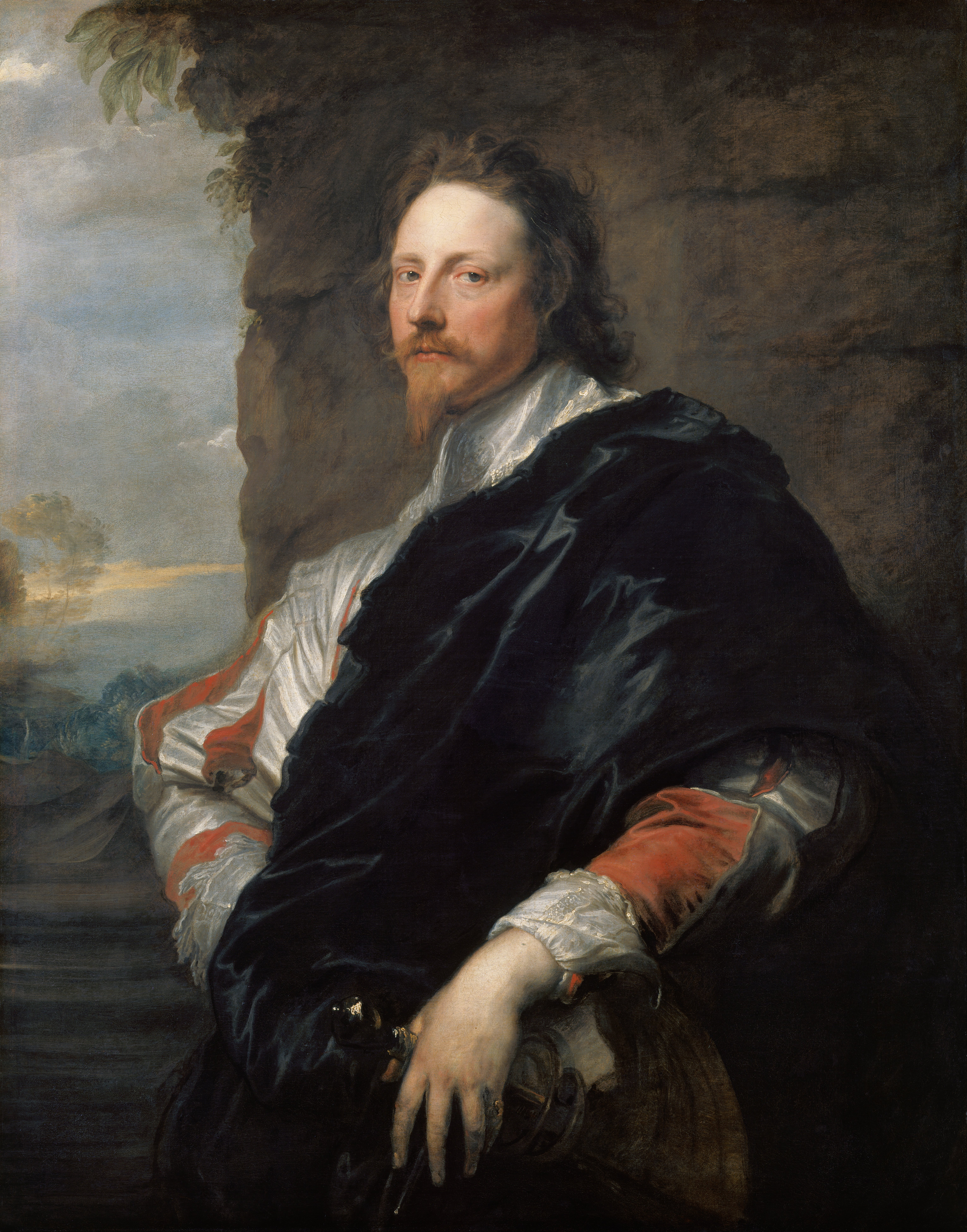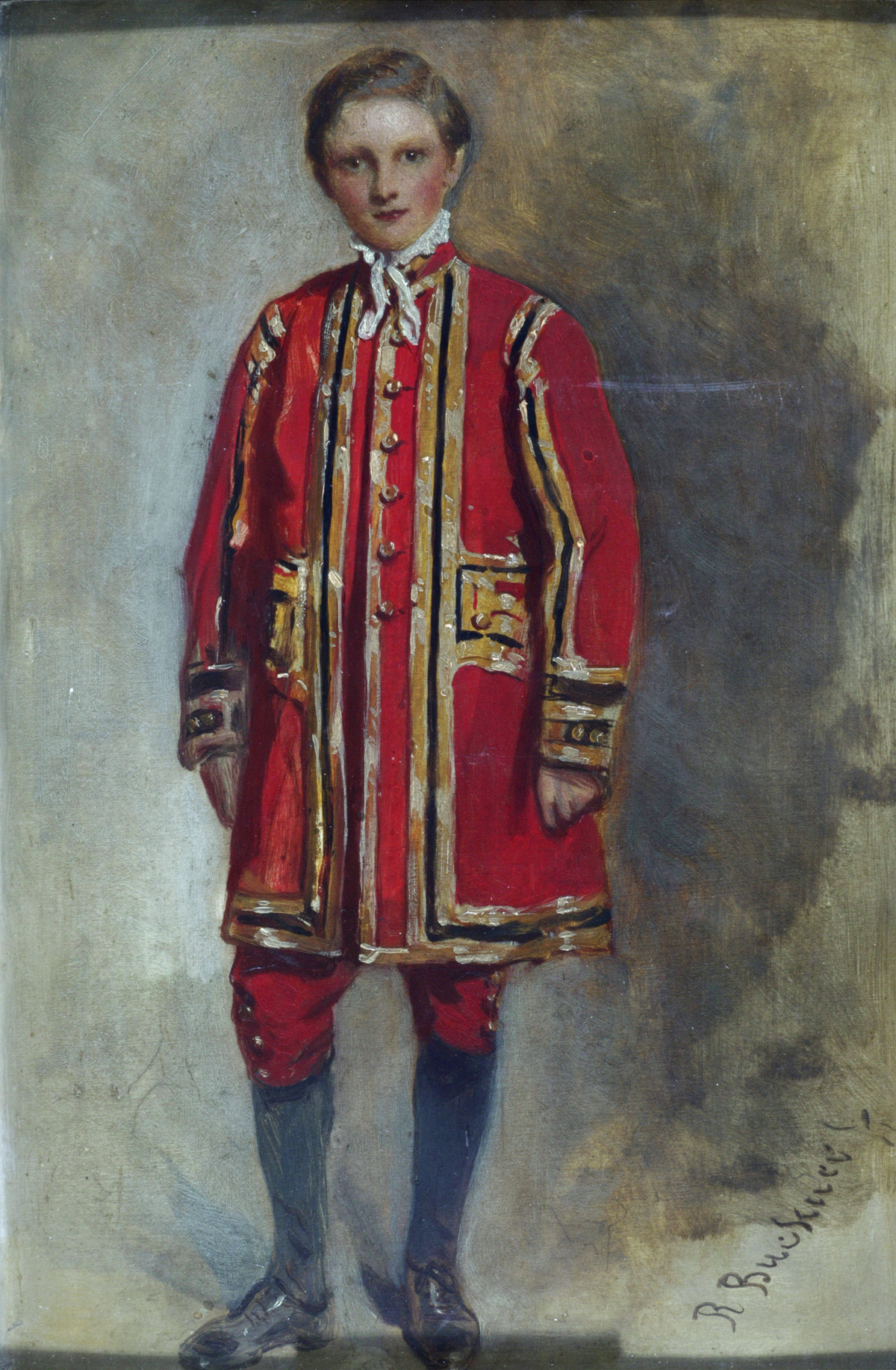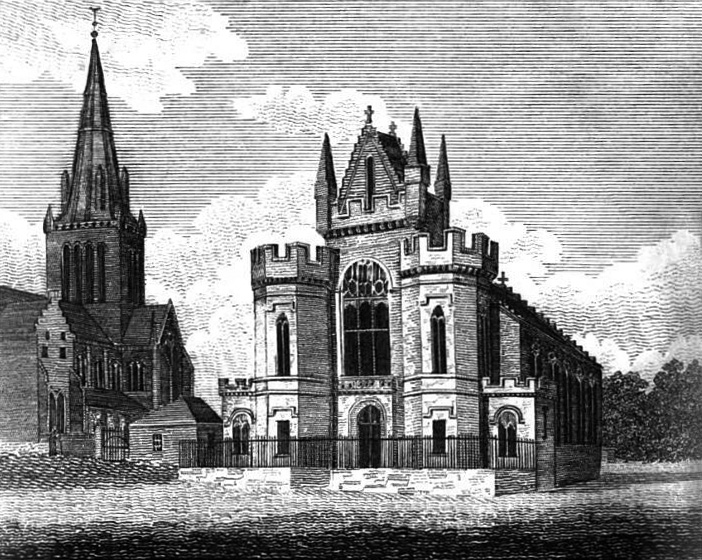|
Queen Alexandra Memorial
__NOTOC__ The Queen Alexandra Memorial on Marlborough Road, London, which commemorates Queen Alexandra, was executed by the sculptor Sir Alfred Gilbert between 1926 and 1932. It consists of a bronze screen incorporating allegorical figures, set into the garden wall of Marlborough House and facing St James's Palace. A late example of a work in the Art Nouveau style, it was regarded by the sculptor as his "Swan song". Before 1926 Gilbert was living in exile abroad, having fled Britain in 1901 bankrupt and disgraced after failing to complete the tomb of the Duke of Clarence in St George's Chapel, Windsor Castle. Gilbert later claimed that the Duke's mother, Princess Alexandra (Queen Alexandra after her husband's accession to the throne as Edward VII), was the only member of the royal family who supported him after this debacle. She is also supposed to have expressed a wish in her old age that Gilbert might execute her memorial, should he outlive her. In 1926 Gilbert was invited to ... [...More Info...] [...Related Items...] OR: [Wikipedia] [Google] [Baidu] |
Alfred Gilbert
Sir Alfred Gilbert (12 August 18544 November 1934) was an English sculpture, sculptor. He was born in London and studied sculpture under Joseph Boehm, Matthew Noble, Édouard Lantéri and Pierre-Jules Cavelier. His first work of importance was ''The Kiss of Victory'', followed by the trilogy of ''Perseus Arming'', ''Icarus'' and ''Comedy and Tragedy''. His most creative years were from the late 1880s to the mid-1890s, when he produced several celebrated works such as a memorial for the Golden Jubilee of Queen Victoria and the Shaftesbury Memorial Fountain, Shaftesbury Memorial Fountain Eros on Piccadilly Circus. As well as sculpture, Gilbert explored other techniques such as goldsmithing and damascening. He painted watercolours and drew book illustrations. He was made a member of the Royal Academy of Arts in 1892, yet his personal life was beginning to unravel as he took on too many commissions and entered into debt, whilst at the same time his wife's mental health deteriorate ... [...More Info...] [...Related Items...] OR: [Wikipedia] [Google] [Baidu] |
National Portrait Gallery, London
The National Portrait Gallery (NPG) is an art gallery in London that houses a collection of portraits of historically important and famous British people. When it opened in 1856, it was arguably the first national public gallery in the world that was dedicated to portraits. The gallery moved in 1896 to its current site at St Martin's Place, off Trafalgar Square, and adjoining the National Gallery. The National Portrait Gallery also has regional outposts at Beningbrough Hall in Yorkshire and Montacute House in Somerset. It is unconnected to the Scottish National Portrait Gallery in Edinburgh, with which its remit overlaps. The gallery is a non-departmental public body sponsored by the Department for Culture, Media and Sport. Collection The gallery houses portraits of historically important and famous British people, selected on the basis of the significance of the sitter, not that of the artist. The collection includes photographs and caricatures as well as paintings, drawings ... [...More Info...] [...Related Items...] OR: [Wikipedia] [Google] [Baidu] |
Monuments And Memorials In London
A monument is a type of structure that was explicitly created to commemorate a person or event, or which has become relevant to a social group as a part of their remembrance of historic times or cultural heritage, due to its artistic, historical, political, technical or architectural importance. Examples of monuments include statues, (war) memorials, historical buildings, archaeological sites, and cultural assets. If there is a public interest in its preservation, a monument can for example be listed as a UNESCO World Heritage Site. The '' Palgrave Encyclopedia of Cultural Heritage and Conflict'' gives the next definition of monument:Monuments result from social practices of construction or conservation of material artifacts through which the ideology of their promoters is manifested. The concept of the modern monument emerged with the development of capital and the nation-state in the fifteenth century when the ruling classes began to build and conserve what were termed monument ... [...More Info...] [...Related Items...] OR: [Wikipedia] [Google] [Baidu] |
The Burlington Magazine
''The Burlington Magazine'' is a monthly publication that covers the fine and decorative arts of all periods. Established in 1903, it is the longest running art journal in the English language. It has been published by a charitable organisation since 1986. Since 2018, it has also published the online, open-access contemporary art platform, ''Burlington Contemporary''. History The magazine was established in 1903 by a group of art historians and connoisseurs which included Roger Fry, Herbert Horne, Bernard Berenson, and Charles Holmes. Its most esteemed editors have been Roger Fry (1909–1919), Herbert Read (1933–1939), and Benedict Nicolson (1948–1978). The journal's structure was loosely based on its contemporary British publication '' The Connoisseur'', which was mainly aimed at collectors and had firm connections with the art trade. ''The Burlington Magazine'', however, added to this late Victorian tradition of market-based criticism new elements of historical resea ... [...More Info...] [...Related Items...] OR: [Wikipedia] [Google] [Baidu] |
Buckingham Palace
Buckingham Palace () is a royal official residence, residence in London, and the administrative headquarters of the monarch of the United Kingdom. Located in the City of Westminster, the palace is often at the centre of state occasions and royal hospitality. It has been a focal point for the British people at times of national rejoicing and mourning. Originally known as Buckingham House, the building at the core of today's palace was a large townhouse (Great Britain), townhouse built for the John Sheffield, 1st Duke of Buckingham and Normanby, Duke of Buckingham and Normanby in 1703 on a site that had been in private ownership for at least 150 years. It was acquired by George III in 1761 as a private residence for Charlotte of Mecklenburg-Strelitz, Queen Charlotte and became known as The Queen's House. During the 19th century it was enlarged by architects John Nash (architect), John Nash and Edward Blore, who constructed three wings around a central courtyard. Buckingham Pala ... [...More Info...] [...Related Items...] OR: [Wikipedia] [Google] [Baidu] |
John Masefield
John Edward Masefield (; 1 June 1878 – 12 May 1967) was an English poet and writer. He was Poet Laureate of the United Kingdom, Poet Laureate from 1930 until his death in 1967, during which time he lived at Burcot, Oxfordshire, near Abingdon-on-Thames. Among his best known works are the children's novels ''The Midnight Folk'' and ''The Box of Delights'', and the poems "The Everlasting Mercy" and "Sea-Fever". Shortly after his death his house (Burcote Brook) burned down and was later replaced by a Cheshire Home named after him. Biography Early life Masefield was born in Ledbury in Herefordshire to George Masefield, a solicitor, and his wife Caroline (née Parker). He was baptised in the Church at Preston Cross, just outside Ledbury. His mother died giving birth to his sister when Masefield was six, and he went to live with his aunt. His father died soon afterwards, following a mental breakdown.David Gervais.Masefield, John Edward, in ''Oxford Dictionary of National Biography ... [...More Info...] [...Related Items...] OR: [Wikipedia] [Google] [Baidu] |
Poet Laureate Of The United Kingdom
The British poet laureate is an honorary position appointed by the monarch of the United Kingdom on the advice of the Prime Minister of the United Kingdom, prime minister. The role does not entail any specific duties, but there is an expectation that the holder will write verse for significant national occasions. The laureateship dates to 1616 when a pension was provided to Ben Jonson, but the first official laureate was John Dryden, appointed in 1668 by Charles II of England, Charles II. On the death of Alfred, Lord Tennyson, who held the post between November 1850 and October 1892, there was a break of four years as a mark of respect; Tennyson's laureate poems "Ode on the Death of the Duke of Wellington" and "The Charge of the Light Brigade (poem), The Charge of the Light Brigade" were particularly cherished by the Victorian public. Four poets—Thomas Gray, Samuel Rogers, Walter Scott and Philip Larkin—turned down the laureateship. Historically appointed for an unfixed term a ... [...More Info...] [...Related Items...] OR: [Wikipedia] [Google] [Baidu] |
Edward Elgar
Sir Edward William Elgar, 1st Baronet, (; 2 June 1857 – 23 February 1934) was an English composer, many of whose works have entered the British and international classical concert repertoire. Among his best-known compositions are orchestral works including the ''Enigma Variations'', the ''Pomp and Circumstance Marches'', concertos for Violin Concerto (Elgar), violin and Cello Concerto (Elgar), cello, and two symphony, symphonies. He also composed choral works, including ''The Dream of Gerontius'', chamber music and songs. He was appointed Master of the King's Musick in 1924. Although Elgar is often regarded as a typically English composer, most of his musical influences were not from England but from continental Europe. He felt himself to be an outsider, not only musically, but socially. In musical circles dominated by academics, he was a self-taught composer; in Protestant Britain, his Roman Catholicism was regarded with suspicion in some quarters; and in the class-consci ... [...More Info...] [...Related Items...] OR: [Wikipedia] [Google] [Baidu] |
Master Of The King's Music
Master of the King's Music (or Master of the Queen's Music, or earlier Master of the King's Musick) is a post in the Royal Household of the United Kingdom. The holder of the post originally served the monarch of England, directing the court orchestra and composing or commissioning music as required. The post is broadly comparable to that of poet laureate. It is given to people eminent in the field of classical music; they have almost always been composers. Duties are not clearly stated, though it is generally expected the holder of the post will write music to commemorate important royal events, such as coronations, birthdays, anniversaries, marriages and deaths, and to accompany other ceremonial occasions. The individual may also act as the sovereign's adviser in musical matters. Since 2004 the appointment has been for a fixed term of ten years rather than for life, as previously. The King's Musick In the 14th century professional music-making in England was theoretically re ... [...More Info...] [...Related Items...] OR: [Wikipedia] [Google] [Baidu] |
Queen Alexandra's Memorial Ode
Queen Alexandra's Memorial Ode, otherwise known as ''"So many true Princesses who have gone"'', is an ode written by John Masefield and set to music for choir and orchestra by Sir Edward Elgar for the occasion of the unveiling of Sir Alfred Gilbert's memorial to Queen Alexandra on 8 June 1932 outside Marlborough House in London. History It was Masefield's first commission as Poet Laureate, and Elgar, as Master of the King's Musick, was requested to set the verses in mid-May 1932, shortly before his seventy-fifth birthday. Elgar originally set the poem to an orchestral accompaniment but, due to a change of plan, the accompaniment was hurriedly re-arranged by Captain Andrew Harris of the Welsh Guards so it could be played by a military band. The day chosen for the unveiling of the memorial by the King was Alexandra Rose Day. At the beginning of the ceremony outside Marlborough House, Elgar, wearing magnificent robes, conducted the chorister children of the Chapels Royal, the c ... [...More Info...] [...Related Items...] OR: [Wikipedia] [Google] [Baidu] |
Chapel Royal
A chapel royal is an establishment in the British and Canadian royal households serving the spiritual needs of the sovereign and the royal family. Historically, the chapel royal was a body of priests and singers that travelled with the monarch. The term is now also applied to the chapels within royal palaces, or a title granted to churches by the monarch. In the Church of England, working royal chapels may also be referred to as royal peculiars, an ecclesiastical jurisdiction of the monarch. The dean of His Majesty's chapels royal is a royal household office in the United Kingdom that, in modern times, is usually held by the Bishop of London. In Canada, the three chapels royal are affiliated with some of the country's First Nations. A British chapel royal's most public role is to perform choral liturgical service. The British chapels royal have played a significant role in the musical life of the nation, with composers such as Tallis, Byrd, Bull, Gibbons, and Purcell a ... [...More Info...] [...Related Items...] OR: [Wikipedia] [Google] [Baidu] |
Cosmo Gordon Lang
William Cosmo Gordon Lang, 1st Baron Lang of Lambeth, (31 October 1864 – 5 December 1945) was a Scottish Anglican prelate who served as Archbishop of York (1908–1928) and Archbishop of Canterbury (1928–1942). His elevation to Archbishop of York, within 18 years of his ordination, was the most rapid in modern Church of England history. As Archbishop of Canterbury during the abdication crisis of 1936, he took a strong moral stance, his comments in a subsequent broadcast being widely condemned as uncharitable towards the departed king. The son of a Scots Presbyterian minister, Lang abandoned the prospect of a legal and political career to train for the Anglican priesthood. Beginning in 1890, his early ministry was served in slum parishes in Leeds and Portsmouth, except for brief service as Vicar of the University Church of St Mary the Virgin in Oxford. In 1901 he was appointed suffragan Bishop of Stepney in London, where he continued his work among the poor. He also serv ... [...More Info...] [...Related Items...] OR: [Wikipedia] [Google] [Baidu] |










